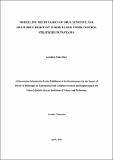Modelling the Dynamics of Drug Sensitive and Multi-Drug Resistant Tuberculosis Undercontol Strategies in Tanzania a
Abstract
Tuberculosis (TB) is a fatal airborne disease that affects one-third of the world’s population and presents high disease burden globally, and resurgence of multi-drug resistant tuberculosis in sub-Saharan Africa raises a concern to assess the impact of spread of drug-resistant strain on global effort of controlling the burden of disease. The deterministic one-strain tuberculosis model with vaccination and treatment as intervention strategies was considered, first to compute effective reproduction number, Re and then to investigate the impact of vaccination and treatment on Re by performing the numerical sensitivity analysis of Re. The parameters involving vaccination of newborns and treatment of active TB cases were found to have high impact on Re and as a result a combination of both vaccination and treatment has desirable effect of eradicating TB from community. To investigate the role of reinfection on transmission dynamics of TB, stability analysis of Disease Free Equilibrium (DFE) and Endemic Equilibrium (EE) were performed. The results show that DFE is locally and globally asymptotically stable whenever Re < 1, there is an existence of backward bifurcation at Re = 1 and by using Lyapunov direct method and LaSalle’s invariant principle we show that EE is globally asymptotically stable when Re > 1. To assess the impact of control measures education campaign and chemoprophylaxis of latently infected individuals on transmission dynamics of TB, the optimal control theory is used and optimal control policy is derived by using Pontryagin’s Maximum Principle (PMP). The results show that multiple controls are effective than single control in reducing the number of infected individuals with TB. To investigate the impact of the exposed immigrants on prevalence and incidence of Multi-drug Resistant Tuberculosis (MDR-TB), the two-strain tuberculosis model with treatment in pres-ence of healthy and exposed immigrants is developed. The results show that the presence of exposed immigrants to community increase prevalence and hence the burden of MDR-TB.
i
In addition, the increase in treatment rates of separate and combined strains of TB reduce signifi-cantly disease prevalence and alleviate TB infections. Finally the backward bifurcation theory and local stability of endemic equilibria of MDR-TB model were carried out. We found existence of multiple equilibria and the possibility of backward bifurcation at Re = 1, an indication that reducing Re below 1 is not a guarantee to eradicate MDR-TB from community.

